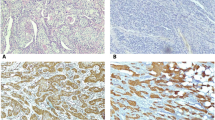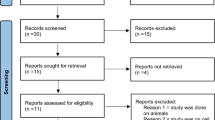Abstract
57 primary tumour samples from Indian oral cancer patients with a 5-15 year tobacco chewing habit, were examined for mutational activation in codons 12, 13 and 61 of the H-ras, K-ras and N-ras oncogenes. The highly sensitive assay based on specific oligonucleotide hybridisation following in vitro amplification of unique sequences by polymerase chain reaction was employed. Mutations were detected in twenty (35%) of the samples and were restricted to H-ras, codons 12, 13 and 61. Two cases had concurrent mutations in codons 12 and 61. The majority of the mutations were at H-ras 61.2 (Glutamine to Arginine) and H-ras 12.2 (Glycine to Valine). Three of the less frequent mutations are apparently novel. Interestingly, eight of the samples with H-ras mutations also showed loss of wild-type H-ras, as judged by absence of signals for wild-type codons 12 or 61 on dot blots. The specific H-ras mutations in these oral malignancies associated with tobacco chewing, may represent an important example of an environmental carcinogen-induced step, in a pathway leading to malignant transformation.
Similar content being viewed by others
Author information
Authors and Affiliations
Rights and permissions
About this article
Cite this article
Saranath, D., Chang, S., Bhoite, L. et al. High frequency mutation in codons 12 and 61 of H-ras oncogene in chewing tobacco-related human oral carcinoma in India. Br J Cancer 63, 573–578 (1991). https://doi.org/10.1038/bjc.1991.133
Issue Date:
DOI: https://doi.org/10.1038/bjc.1991.133
- Springer Nature Limited
This article is cited by
-
Mutant HRas Signaling and Rationale for Use of Farnesyltransferase Inhibitors in Head and Neck Squamous Cell Carcinoma
Targeted Oncology (2023)
-
Cooperation between oncogenic Ras and wild-type p53 stimulates STAT non-cell autonomously to promote tumor radioresistance
Communications Biology (2021)
-
Global Scenario of Research in Oral Cancer
Journal of Maxillofacial and Oral Surgery (2019)
-
Oral squamous cell carcinoma: microRNA expression profiling and integrative analyses for elucidation of tumourigenesis mechanism
Molecular Cancer (2016)




